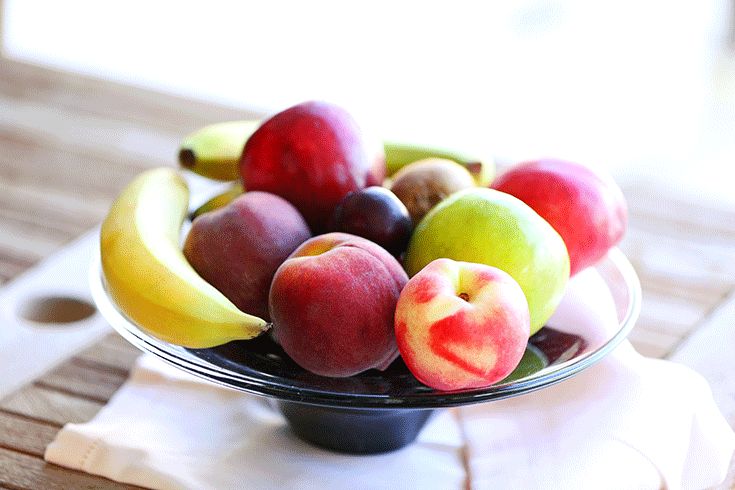
Eating healthy consistently can be difficult, especially if you’re feeling a little unmotivated or uninspired by everyday options. There is another, often overlooked, element in succeeding to eat healthily – all the time. This involves kitchen organisation, space efficiency and getting the most out of the fresh food you have on hand.
But the good news is, it’s really easy to take control without breaking the bank or having to spend excess amounts of time cooking meals up. It’s all about getting your kitchen prepped and ready with simple changes that are easy to follow and maintain over time. So here are eight great tips for organising your kitchen for a healthier lifestyle:
1. De-clutter
Optimising your health isn’t just about your body, it’s about the environment you live in. One of the quickest ways to create a healthier space around you is to declutter and organise your kitchen. Clutter can be mentally draining, and adds confusion where there should be clarity – if you’re after a snack, you’re likely going to eat what come first to hand – and, if your kitchen is organised for healthy eating, you can make sure this snacking keeps you healthy and nourished, no matter what your craving.
Here is a quick guide to getting the kitchen organised for optimum health benefits:
- Clear out your kitchen utensils and appliances. Do you have a drawer full of utensils you never use, or a fancy coffee machine that is too much trouble than it’s worth? Now’s the time to be ruthless. Throw out those things you don’t use and – when in doubt – continue throw.
- Once those spaces are emptied of any unnecessary objects, it’s a good idea fill them with things that remind you of your health goals. This could mean your blender replaces your coffee machine, or your bread maker takes the position of your old jaffle-maker.
- The pantry is next. Anything expired or very close to the use by date can go. Don’t spend time debating over that packet of crisps, or chocolate biscuits – any product that doesn’t align with your health goals can go (a few little treats are okay, of course).
- Organise the shelves in your pantry according to meal plans or food groups. Work out a system that is easy for your everyday schedule, and that will keep those healthier products front-of-shelf when you’re packing your lunch or raiding the pantry for a snack.
- Finally, the fridge! Apply the same rules as you did for the pantry to clear out your fridge, and you’re de-cluttering is complete.
TIP: Donate extra food you don’t want that is still within its use-by date to organisations that assist people in need.
2. Display (healthy) food
This seems like a counterproductive point. Put food on display, won’t that just encourage you to eat? Well yes that’s the point, except in this case all the foods will be healthy. This applies to inside the fridge and pantry, as well as on the countertop.
If your coffee table is looking a little bare, why not decorate it with some seasonal fruit? So next time when you’re feeling peckish whilst watching the telly, it could be as simple as reaching over and peeling yourself a banana.
It’s also a good idea to keep nuts, seeds and preserved fruits and veggies front of show in your pantry and fridge, and use glass jars and containers to keep your almond meal, wholegrain rice and quinoa stocks fresh and accessible.
3. Drink more water
We all know the rule – drinking at least eight glasses of water each day helps maintain fluid levels in the body; energise muscles; clear skin; and flush the kidneys. But achieving that minimum of eight glasses is not always easy.
One of the easiest and quickest ways to boost water intake is to start creating your own flavoured waters. Yes, some of these waters will contain sugars but, instead of coming from processed glucose and other nasty additives – as seen in soft drinks, energy drinks and some bottled flavoured waters, the sugar (and flavour!) will come from natural fruits, herbs and spices.
Jam pack your water with some fresh lime and mint for a cool refreshing summer hit, or add some cinnamon and strawberries for some wintery warmth. Kids and adults alike will love the flavours, and you can also use ingredients that will help sooth the digestive system and boost immunity – such as peppermint or lemon – while increasing hydration at the same time
TIP: Keep it extra fresh with frozen ice-cubes infused with fruit pieces or a twist of lemon or lime juice.
4. Buy or grow your own fresh food
Installing your own vertical herb or fruit & veggie patch in the kitchen can create a year-round supply of your favourite (and healthy!) foods. Not only can this save you money, it’s the perfect way to display healthy options for snacking and handy ingredients for home cooking – removing the temptation (or excuse) for ordering take-out or snacking on something naughty. You can use hanging pots if you don’t have much wall space to work with.
5. And then freeze some of it
Fruit and veggies don’t stay fresh forever. A good way to prolong the goodness is to use the freezer – this can also be helpful for those with busy schedules. Making additional portions of healthy meals and storing them in the freezer can be perfect for a fast meal mid-week, and help in keeping you healthy, even at your busiest.
A good idea for sticking to this strategy is to set yourself ‘prep day’s where you do a batch of cooking, designed to tie you over for a week or fortnight. It’s best to focus on preparing fresh, healthy food, as opposed to pre-packed or brought meals. Think about making a pasta sauce from scratch (without the sugar and preservatives found in store-bought options) and freezing enough of it for another two meals. Quinoa dishes are also easy to freeze, as are home made vegetable curry sauces.
6. Use environmentally friendly products
A large percentage of the products that are bad for us, are packaged in materials that are also bad for the environment. Sure, it can be costly to completely replace everything in your kitchen with green alternatives but you can start small by using environmentally friendly cleaning products or re-usable glass tupperware containers. Another way to keep it healthy and clean is to limit amount of packaged food you buy and instead use glass jars to store homemade sauces, marinades and spreads.
7. Have a meal plan on the wall
If you have a bland wall in the kitchen that needs a little revamp, think about installing a black board, white board, or even a simple poster that tracks your meals for the week. You and your family will be able to track your healthy eating habits, plan for the weeks ahead and remove the temptation of returning to negative eating habits.
You can purchase meal plan organisers for your home or you can make a simple DIY one that incorporates the food you have on display in your kitchen.
8. Use smaller plates and bowls
Trick your brain into thinking it’s eating more by using a range of smaller plates and bowls. Studies have shown that larger plates make servings appear smaller, whilst smaller plates can deceive people into thinking a serving of the same size is significantly larger.
So change up your eating habits with some new dinnerware! You don’t need to completely replace everything in your cupboards, but it’s good to be mindful that your plate will influence how you eat and subsequently how healthy you are.

 02 9624 7099
02 9624 7099





